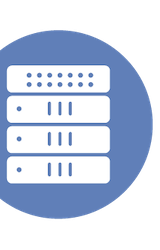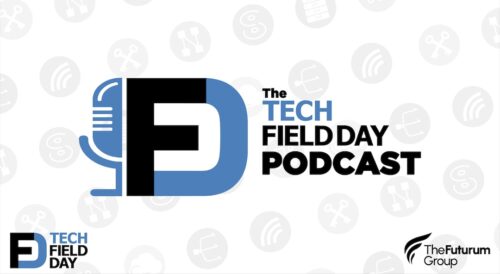The 2nd annual Commvault GO conference takes place in Washington DC November 6-8. Rich Stroffolino takes a look at the speakers, sessions, and other highlights announced. The conference may be new, but seems laser focused on the company’s data management vision.
MoSMB, Less Problems
MoSMB from Ryussi offers a proprietary SMB3 alternative to SAMBA for Linux and Unix systems. Rich Stroffolino looks at it’s feature set and why this may be the sweet spot for many NAS vendors looking for something more robust than SAMBA.
SNIA Hops on DePop with Hyperscalers
SNIA presented at Storage Field Day, discussing how hyperscalers are effecting the storage industry as a whole. These businesses command so much storage that they can exert direct feature requests to component makers due to their unique scale. Rich Stroffolino looks at the effects of low percentage tail latency on application performance, and the DePop standard that was developed to address it.
OpenFaaS: Serverless for Containers Made Easy
Rich Stroffolino takes a look at what the OpenFaaS project presented at Tech Field Day Extra from DockerCon EU 2017. The project provides a framework to easily implement serverless functions in a container framework. The project now includes support for Docker Swarm and Kubernetes, and creator Alex Ellis even provides walkthroughs on how to roll your own cluster using Raspberry Pis.
Cisco Launches Intersight: Cloud Managed UCS and HyperFlex
Cisco unveiled Intersight at Networking Field Day, their SaaS platform for unified UCS and HyperFlex management. Rich Stroffolino wrote up his thoughts on the announcement. For him, it shows a commitment by Cisco to services and expanding their customer base as their path to the future.
Excelero’s NVMesh Magic
Excelero made a big splash with delegates from their debut at Storage Field Day in March. Rich Stroffolino has been mulling over their presentation and wrote up his thoughts. The company’s scale out storage architecture really seemed to excite Rich at the possibility, as it was able to achieve millions of IOPS on relatively cheap hardware. This combination, despite a dearth of data services, seemed to open up a lot of possibilities.
Datera Elastic Data Fabric
Rich Stroffolino takes a look at Datera’s Elastic Data Fabric, as presented at Storage Field Day in March. With this solution, Datera hopes to provide a way to make on-site storage as flexible and automated as public cloud offerings, and to provide easy ways for organizations to adopt a hybrid cloud strategy.
Back to the Storage Future with Intel’s SPDK
Rich Stroffolino gives an over of Intel’s SPDK, which includes a storage driver that bypasses the kernel for lower latency and better scaling with NVMe storage. Intel’s software approach to performance optimization perhaps signals a performance plateau based on hardware advances alone.
Veeam Goes Hollywood, Now Has Two Agents
Veeam recently released new backup agents for both Windows and Linux. Rich Stroffolino gives them both a quick overview. He focuses on features, UI, and where they fall in Veeam’s much larger backup and recovery portfolio.
Storage Field Day Exclusive Comes to Pure Accelerate 2017
Storage Field Day and Pure Accelerate are both great events. Combined, they create something truly unique. At this exclusive event, nine prominent storage experts will join the presenters from Pure Storage in San Francisco to hear the latest announcements and technical deep dives on their all-flash storage portfolio. Mark your calendar, Pure Accelerate will be in San Francisco from June 12-14.
Pingdom of Heaven: Monitoring Cloud with SolarWinds
Rich Stroffolino takes a look at Pingdom from SolarWinds. As part of their Monitoring Cloud Suite, Pingdom monitors web app and site uptime and performance. This supports not just simple checks, but includes the ability to script complex page interactions to simulate user experience. Pingdom combines simulated and real world client side monitoring to give you a comprehensive performance perspective.
Robin Systems Defines Applications
Redefining IT infrastructure isn’t something to take on lightly. Robin Systems believe they have an approach. It’s focused around making the infrastructure application aware. The entire system is designed around an application manifest, a YAML file where the actual requirements of an application are laid out in a simple rules based format. This is the basis which the system uses to automate everything from deployment to performance.
Sans SAN with StorMagic
Rich Stroffolino writes up his thoughts about StorMagic’s SvSAN solution. He sees it as an interesting way to bring enterprise class storage to sites that might not have a heavy volume of data, but need high availability and redundancy in a pure software package.
VMware NSX: Going Big with Micro-Segmentation
At Networking Field Day in April, VMware gave a four hour presentation, going into a deep dive on NSX. In this piece, Rich Stroffolino focuses specifically on how the platform can be used for network security applications, and increase overall visibility.
NetApp and Open Source
NetApp and open source isn’t an association that immediately springs to mind. Rich Stroffolino wrote up a piece giving an overview of why that’s about to change. The company has actively engaged with the open source community over the past 18 months, centered around their developer site, thePub. Their efforts originally started back in 2011 around OpenStack, and now they have made significant contributions to the Cinder and Manila projects as well.
Managed Storage with ClearSky Data
Rich Stroffolino writes up his thoughts on what he saw from ClearSky Data, based on their Tech Field Day presentation. He particularly highlights the companies early moves into provide a storage backend for containerized applications. The work is still in development, but Rich is excited by the possibilities.
Datrium And Open Convergence
Rich Stroffolino wrote up his thoughts on Datrium’s presentation from Tech Field Day. The company has an interesting response to the typical hyperconverged infrastructure story, something they call Open Convergence with their DVX Rackscale architecture. This allows for heterogeneous deployments of Datrium’s own nodes and existing hardware. More importantly, Datrium’s architecture separates nodes for mass storage and those for compute. This allows for servers to be stateless, easier management, and less cross-talk between nodes. It’s a very interesting rethink of how to approach convergence.
Turbonomic: Adam Smith and App Assurance
At Turbonomic’s Tech Field Day presentation, they showed off their application assurance platform with a totally revamped UI. Rich Stroffolino found it compelling, and considered the overall implications of how Turbonomic frames their solution. They use a supply-and-demand paradigm to frame their solution. Rich considers the possibility that a framing metaphor could be a convincing product differentiator.
TELoIP and the SD-WAN Cook-off
Rich Stroffolino wrote up his thoughts from TELoIP’s presentation at Networking Field Day earlier this month. You may not have heard of the company, but they’ve been around since 2002, and have a lot of interesting, and patented, technology. Rich focuses on the capabilities of their VINO SD-WAN solution, which aggregates all available links to offer the best high utilization, performance, and reliability.
The Future of On-Prem in a Cloud World
Rich Stroffolino shared an interview from ZDNet, considering what the roll of the cloud would be in the data center. Rich found it part of an interesting trend in the enterprise, seeing cloud computing as less of a zero-sum game with on-prem, and more of a spectrum. In the interview, Michael Howard and Monty Widenius both actually predict a move back to on-prem infrastructure, as cost and performance are better presented vs the seeming ease of the cloud. It’s an interesting debate, we’ll see how the winds of change impact the role of the public cloud going forward.








